Malu
View Blog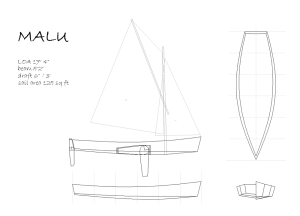
The designing and building of MALU was a personal indulgence for me, built for me to my own requirements. I wanted a boat that had good sailing abilities, was easy to launch and rig, and would require low maintenance. A boat designed for and from the local waters, sharpies were a common choice in the days of sail on the west coast of Florida. I love workboats, but “work” for this boat was that of day sailing, so performance was important, but not at the cost of seaworthiness or aesthetics.
The Clark Mills designed Windmill is the mid-century modern – sports car version of a sharpie, a one design class for teenagers who had out grown the Optimist Pram, and wanted the fastest, go-to-hell sailboat around. The Windmill had been part of my sailing history. I had crewed on a Windmill as a teen in Tarpon Springs and later worked at Clearwater Bay Marine Ways, and became friends with Clark. This was my starting point. The Windmill was designed for simple strong construction, so that a home built boat could compete in the class. It has proven to be not only fast, but also seaworthy (see WoodenBoat #26, Classic Boat January 2014 p.67). I have maintained these qualities in Malu.
I maintained the basic bottom shape, but made the boat larger with another 8” of beam and almost 2’ of length. Giving the hull a little more sheer and a straight stem gave the boat a more traditional look. The sprit rig allows for an easily stepped mast of shorter length. I abandoned the dagger board for the more user friendly centerboard, and added storage compartment in the construction of the thwarts. The basic construction remains true to its Windmill heritage, and uses the new class requirements of full length air tanks as an integral part of the hull. While essential in the fiberglass versions to keep the boat afloat if capsized, it adds a lot of strength and stiffness to the plywood hull, and makes self-rescue after a capsize a much easier operation.
Building video:
The Building of MALU from Michael Jones on Vimeo.
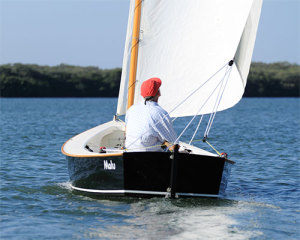
There is no provision for an outboard, it simply is not necessary, nor is there an arrangement for oars. It would certainly row easily, but the oars would always be a storage issue. The boat moves so easily through the water, if there is even a ghost of a breeze I sail. When the need arises to get out of a channel too tight for tacking, I simply stand or sit on the bow and use a canoe paddle. Far from being a choice, and much easier than dealing with complications of a motor.
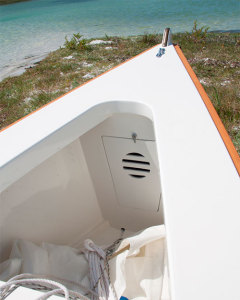
Storage in the seat compartments keeps the sole clear from unneeded flotsam and jetsam. I keep two adult life preservers under the helm seat, and if more are needed it would be easy to secure them against the transom. If I have a cooler, and I always have a supply of fresh water on board, it is secured directly behind the helm seat, out of the way of fouling the sheets.Under the seats either side of the CB trunk I carry the VHF radio, charts, cameras, as well as spare lines and parts.
The rig is easily sailed alone, which is more common for me than with a crew. The double ended main sheet runs through cam cleats that are mounted on the side deck just aft of the helmsman’s spot on the rail. The jib sheets come through blocks with attached cam cleats so that no sheets are ever cleated and always easy to adjust in a puff, all within easy reach.
The tiller extends beyond the helmsman’s seat and the tiller extension makes riding the rail a very comfortable position. It also allows for moving yourself (your ballast) to the optimal position for each point of sail, or to move about to organize lines and to stow loose objects, or reach the spare parts in the center lockers.
Sailing video:
sailing HD from Michael Jones on Vimeo.
Plans are $65 delivered as PDF’s electronically paper plans are available plus printing and shipping costs.
The plans consist of 4 sheets 24”X36”, include lines, offsets, construction details, spar and sail plans.
Malu is featured in WoodenBoat Magazine’s Small Boats 2015. WB’s Small Boats 2015 Print Small Boats 2015 Digital Issue

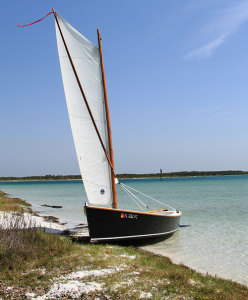
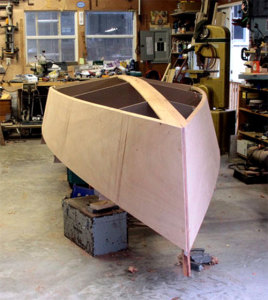

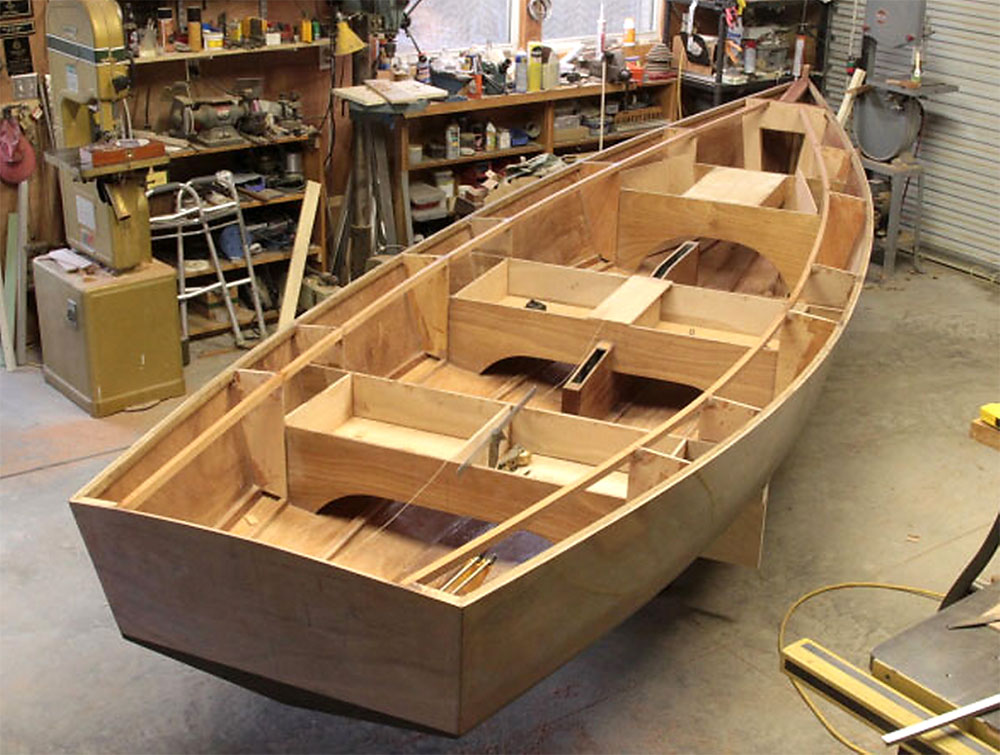
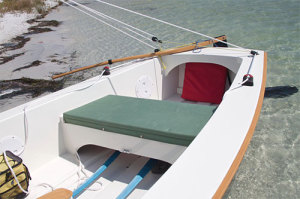
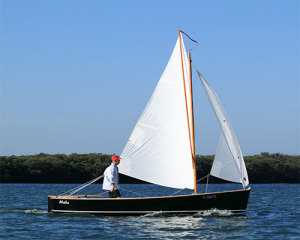
Recent Comments